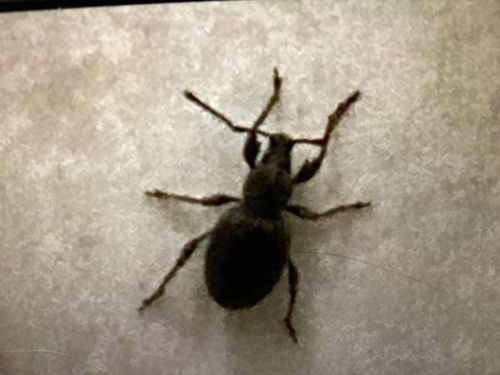Broad-nosed Weevil
Scientific Name: Family Entiminae (e.g., common genera like Otiorhynchus or Phyllobius)
Order & Family: Order Coleoptera, Family Curculionidae, Subfamily Entiminae
Size: 3 mm to 20 mm (most common species are 5-10 mm)

Natural Habitat
Gardens, orchards, nurseries, forests, and fields. Many species are associated with specific host plants.
Diet & Feeding
Adults typically feed on leaves, buds, and flowers of various plants. Larvae are often root feeders, sometimes causing significant damage to horticultural and agricultural crops.
Behavior Patterns
Many species are nocturnal, feeding at night and hiding during the day. They are often flightless, relying on walking to move between plants. Some species are parthenogenetic (reproduce asexually). When disturbed, they may drop to the ground and feign death (thanatosis).
Risks & Benefits
Potential risks: Many species are significant agricultural and horticultural pests, causing damage to a wide range of plants, including ornamentals, fruit trees, and food crops. Larval feeding on roots can be particularly destructive, leading to stunted growth or plant death. Potential benefits: None commonly recognized for most pest species; however, all insects contribute to the broader ecosystem as a food source for other animals.
Identified on: 10/16/2025